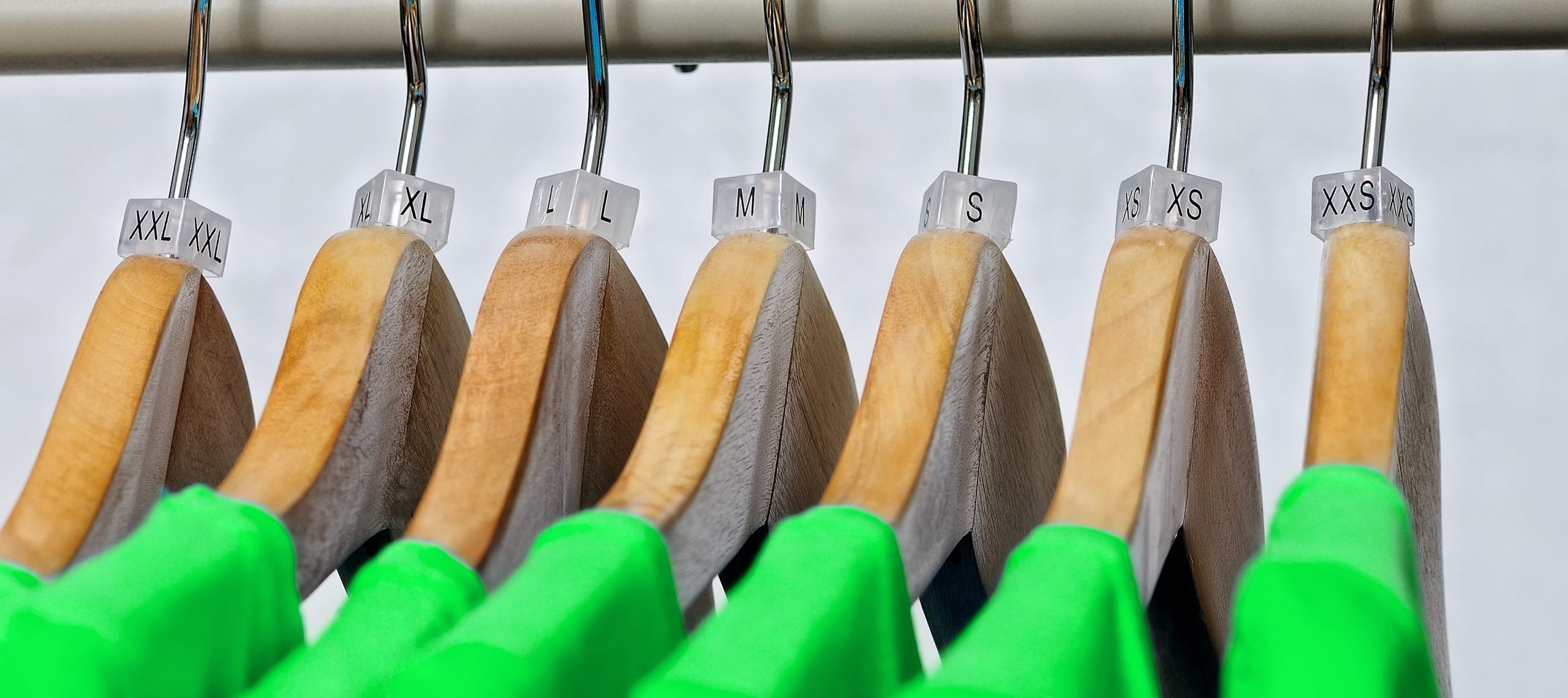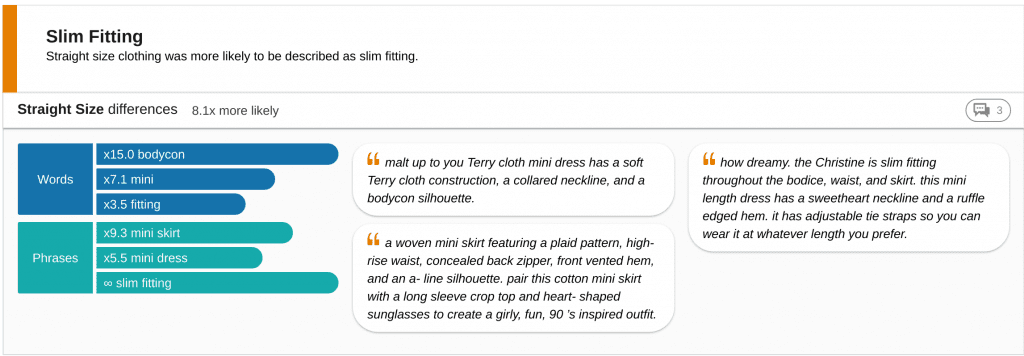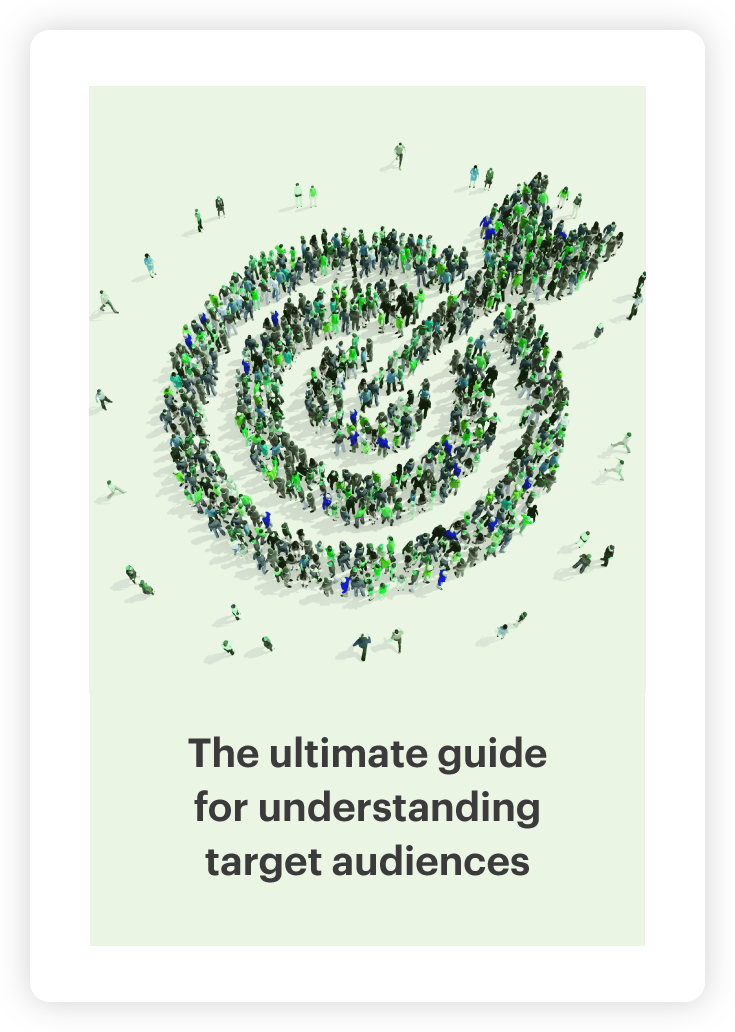Understanding the language of plus size clothing

Fashion is becoming more and more inclusive, as it should – but not all brands are taking steps to welcome a wider range of sizes and body types, or using the right language to market plus size clothing.
Many modern fast-fashion brands in the US sell clothing in three sizes – small, medium and large. Some brands offer even fewer, opting for a one size fits all system… we’re looking at you at you Brandy Melville. While this is counteracted by the rise of plus size only brands, we wanted to find out if all options are equal.
To uncover the differences in marketing to different sizes, we compared the language used in website copy, marketing materials and product listings for plus size and straight size clothing brands.
Relative Insight uses text analysis to highlight the linguistic attributes unique to a particular data set. Comparison allows you to see past words and phrases used frequently across both data sets, revealing the differences across each. This technique will uncover the inequalities of product marketing across sizes.
Plus size language
The language used to market plus size clothing valued comfort over anything else. Products were often described as comfy, stretchy or breathable. We saw product features like stretch waistbands and added coverage, which reflect this emphasis.


Plus size clothing was frequently described by using the feel of the product and fabric, useful where the weight and feel of a material can be unclear when online shopping. Plus size brands used language to relay the sensory attributes of a garment.
Finding the perfect fit can be difficult across all body sizes, and plus size clothing really catered to this concern. In addition to a standard brand-wide sizing chart, the language used throughout product listings of plus size clothing also included exact product measurements and fit recommendations. This additional information ensures an accurate fit, increasing customer satisfaction.
Brands described their plus size audiences as curvy, detailing specially designed clothing made to hug curves and cater to curvy customers. This word choice is intended to empower customers through the use of a positive adjective.
We found that brands describe plus size garments using classic silhouette names and adjectives. Products were often described as specially designed or tailored for a plus size customer base.


Plus size brands highlighted the versatility of garments, often providing styling tips to wear the item across different occasions. We also found plus size clothing described as feminine significantly more than straight size clothing. Feminine clothing is popular among plus size audiences as the style highlights curves, but some plus size women feel pressure to present as hyper-feminine.


Straight size language
Straight size clothing was sold in matching sets significantly more than plus size garments. Co-ords are limiting, as the top and bottom have to be bought in the same size, but most body types require different sizes for different garments. This form of garment only caters to a small range of body types – and usually in smaller sizes..
Adjustable features like straps and belts were seen more often from straight size brands. This could be an attempt to cater to a wider range of sizes as size options are limited and items are often sold as a one-size set.
Fit for straight size clothing was described as slim fitting or bodycon significantly more than plus size clothing. In addition, tops or shirts were nearly always cropped. These attributes clearly illustrate that straight size clothing brands are targeting specific body types and individuals who feel comfortable showing some skin.


Plus size marketing vs. Forum conversations
Next, we compared plus size marketing to forum conversations to understand if curvy clothing is meeting the needs of its audiences. We found significant discussion around the word tight. Forum users frequently complained of too tight clothing, but sought out appropriately tight clothing for the smaller areas of their body.
A key audience insight was that conversation focused around two main parts of the body – stomach and legs. Pus size forum users had issues finding garments that fit the legs but weren’t too tight on the stomach. Poorly fitting garments often caused issues beyond appearance such as waistbands that did not stay up.


Based on our analysis, plus size clothing brands are producing products and marketing relevant to curvy customers. Brands use language to create a helpful, informative and supportive website environment. However, it seems that straight size brands are catering to a very limited range of customers due to size options and product language. Brands can benefit from increasing product details and fit information.
Relative Insight is your secret weapon in understanding a brand’s communications and opinions of an audience. Book a demo with our team to learn how Relative Insight can help your brand or agency.
